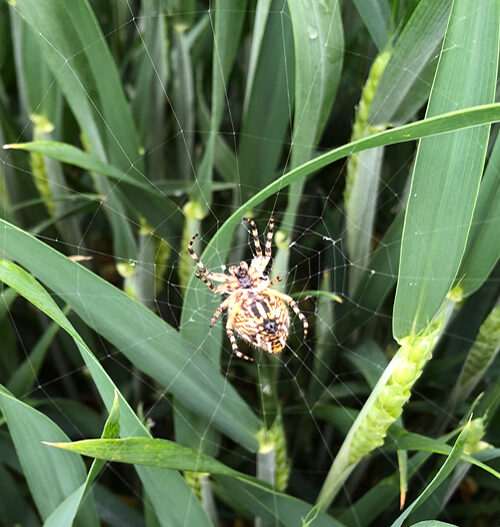Reducing synthetic pesticides
In 2019, we set the goal of becoming synthetic pesticide-free by 2030. Since then, we have reduced use on our crops by 23% against our benchmark.
The initial step towards our goal has been to focus on our soil’s health. We are convinced that improving soil health will also improve plant health and their resilience to pests and diseases. One way we do so, is by working with some core regenerative agriculture principles. Therefore, we are driving up the use of cover crops on all our arable farms, increasing plant diversity in the fields by adding more types of crops, testing how several crops grow together, looking into crop varieties that are more resilient against diseases, reducing tillage, as well as growing more legumes to store feed for the life in the soil.
In addition to prioritising soil health, we have started to embrace new techniques to help us control weeds, insects and diseases. One example is our use of beneficial insects and natural substances to control insects and diseases.
We are also working together with equipment manufactures to develop camera systems for spraying and weeding that can tell the difference between crops and weeds, potentially minimising herbicides.


Measuring pesticide use is tricky. There are multiple variables to consider, including the product, the active ingredient and the toxicity of that active ingredient. We have been measuring pesticide use by the level of active ingredient (AI) per hectare in our sustainability reporting for more than 10 years, so we had a solid benchmark for measuring progress.
During 2020/21, our global cropping teams reduced pesticides by 23% against this benchmark, a significant improvement from the 12% reduction recorded the previous year!




